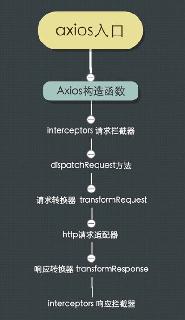分析Android中線程和線程池
由于內(nèi)容過(guò)多,所以將分為上下兩部分,第一部分主要和大家談?wù)凙ndroid中的線程,以及在Android中的常用的線程池。第二部分我們一起來(lái)了解一下AsyncTask的使用和工作原理。
HandlerThreadHandlerThread是Thread的子類,它是一種可以使用Handler的Thread,它的實(shí)現(xiàn)比較簡(jiǎn)單。我們來(lái)看看它的源碼:
package android.os;public class HandlerThread extends Thread { int mPriority; int mTid = -1; Looper mLooper; public HandlerThread(String name) {super(name);mPriority = Process.THREAD_PRIORITY_DEFAULT; } public HandlerThread(String name, int priority) {super(name);mPriority = priority; } protected void onLooperPrepared() { } @Override public void run() {mTid = Process.myTid();Looper.prepare();synchronized (this) { mLooper = Looper.myLooper(); notifyAll();}Process.setThreadPriority(mPriority);onLooperPrepared();Looper.loop();mTid = -1; } public Looper getLooper() {if (!isAlive()) { return null;}// If the thread has been started, wait until the looper has been created.synchronized (this) { while (isAlive() && mLooper == null) {try { wait();} catch (InterruptedException e) {} }}return mLooper; } public boolean quit() {Looper looper = getLooper();if (looper != null) { looper.quit(); return true;}return false; } public boolean quitSafely() {Looper looper = getLooper();if (looper != null) { looper.quitSafely(); return true;}return false; } public int getThreadId() {return mTid; }}
為了讓大家看清楚,我們?cè)创a的一些英文注釋干掉了,現(xiàn)在就很清晰了。整個(gè)類中,除了構(gòu)造方法和對(duì)外提供幾個(gè)public方法以外,就剩一個(gè)方法了run()。從它的實(shí)現(xiàn)來(lái)看,和普通的Thread實(shí)現(xiàn)沒有什么區(qū)別。都是在run()方法中執(zhí)行耗時(shí)操作。不過(guò),HandlerThread內(nèi)部創(chuàng)建了消息隊(duì)列,并且run()方法是一個(gè)無(wú)限循環(huán)的方法,當(dāng)我們不需要HandlerThread的時(shí)候,我們可以調(diào)用quitSafely()或者quit()方法來(lái)結(jié)束這個(gè)線程。這是比較方便的。
IntentServiceIntentService是一種特殊的Service,它是Service的子類,并且它是一個(gè)抽象類,所以必須創(chuàng)建它的子類才可以使用Intent Service。Intent Service可用于執(zhí)行后臺(tái)的耗時(shí)任務(wù),當(dāng)任務(wù)執(zhí)行完畢,它會(huì)自己結(jié)束,不需要開發(fā)著手動(dòng)結(jié)束它。這里需要注意一個(gè)問(wèn)題,Intentservice內(nèi)置有線程,但是它還是屬于Service,所以它的優(yōu)先級(jí)會(huì)比線程高很多,所以不容易被系統(tǒng)殺死。所以比較合適去執(zhí)行一些優(yōu)先級(jí)比較高的任務(wù)。看看它的源碼:
package android.app;import android.annotation.WorkerThread;import android.annotation.Nullable;import android.content.Intent;import android.os.Handler;import android.os.HandlerThread;import android.os.IBinder;import android.os.Looper;import android.os.Message;public abstract class IntentService extends Service { private volatile Looper mServiceLooper; private volatile ServiceHandler mServiceHandler; private String mName; private boolean mRedelivery; private final class ServiceHandler extends Handler {public ServiceHandler(Looper looper) { super(looper);}@Overridepublic void handleMessage(Message msg) { onHandleIntent((Intent)msg.obj); stopSelf(msg.arg1);} } public IntentService(String name) {super();mName = name; } public void setIntentRedelivery(boolean enabled) {mRedelivery = enabled; } @Override public void onCreate() {// TODO: It would be nice to have an option to hold a partial wakelock// during processing, and to have a static startService(Context, Intent)// method that would launch the service & hand off a wakelock.super.onCreate();HandlerThread thread = new HandlerThread('IntentService[' + mName + ']');thread.start();mServiceLooper = thread.getLooper();mServiceHandler = new ServiceHandler(mServiceLooper); } @Override public void onStart(@Nullable Intent intent, int startId) {Message msg = mServiceHandler.obtainMessage();msg.arg1 = startId;msg.obj = intent;mServiceHandler.sendMessage(msg); } @Override public int onStartCommand(@Nullable Intent intent, int flags, int startId) {onStart(intent, startId);return mRedelivery ? START_REDELIVER_INTENT : START_NOT_STICKY; } @Override public void onDestroy() {mServiceLooper.quit(); } public IBinder onBind(Intent intent) {return null; } @WorkerThread protected abstract void onHandleIntent(@Nullable Intent intent);}
這里就很簡(jiǎn)單了,這些方法對(duì)于經(jīng)常使用Service的朋友來(lái)說(shuō),就很熟悉了。大家看onCreate()方法。沒錯(cuò)IntentService就是封裝了HandlerThread和Handler。
當(dāng)我們啟動(dòng)IntentService是onCreate(),方法將會(huì)被調(diào)用,然后就會(huì)創(chuàng)建HandlerThread和ServiceHandler。而onStartCommand()方法又調(diào)用了onStart()方法,從onStart()方法可以看出IntentService 僅僅是通過(guò)ServiceHandler來(lái)發(fā)一個(gè)消息,這個(gè)消息會(huì)在HandlerThread中被處理掉。
大家看這個(gè)onStart()方法,將intent作為消息傳遞給onHandleIntent,這個(gè)intent通常是我們傳遞進(jìn)來(lái)的數(shù)據(jù)。而onHandleIntent就是通過(guò)這個(gè)intent來(lái)區(qū)別具體的后臺(tái)任務(wù)的。
好了,AsyncTask的使用和工作原理。我們會(huì)在下一章在說(shuō)。下面我們看看線程池吧。
不知道大家有沒有遇到過(guò)這種情況。我們?cè)趯戫?xiàng)目,遇到耗時(shí)操作的時(shí)候,怎么辦呢,是不是new Thread().start,那這樣的話,整個(gè)項(xiàng)目中得new多少個(gè)Thread。這種明顯是很浪費(fèi)性能。畢竟線程也是好資源的嘛。那么有沒有一種可以方法對(duì)線程進(jìn)行復(fù)用呢?答案就是線程池。
線程池的好處1、重用線程池中的線程,避免因?yàn)榫€程的創(chuàng)建和銷毀帶來(lái)的性能開銷。
2、能有效的控制線程池中的線程并發(fā)數(shù),避免大量線程之間因?yàn)榛ハ鄵屨假Y源而導(dǎo)致的阻塞現(xiàn)象。
3、能夠?qū)€程進(jìn)行簡(jiǎn)單的管理,并提供定時(shí)執(zhí)行以及指定間隔循環(huán)執(zhí)行等功能。
ThreadPoolExecutorAndroid中的線程池概念是來(lái)源于java中Executor,Executor是一個(gè)空的接口,真正的線程池實(shí)現(xiàn)ThreadPoolExecutor。
public ThreadPoolExecutor(int corePoolSize, int maximumPoolSize, long keepAliveTime, TimeUnit unit, BlockingQueue<Runnable> workQueue, ThreadFactory threadFactory) {this(corePoolSize, maximumPoolSize, keepAliveTime, unit, workQueue, threadFactory, defaultHandler); }
簡(jiǎn)單介紹一下ThreadPoolExcutor各個(gè)參數(shù)的含義
corePoolSize:線程池的核心線程數(shù),默認(rèn)情況下,核心線程會(huì)在線程池中一直存活,即使他們處于閑置狀態(tài)。當(dāng)我們把ThreadPoolExecutor中的allowCoreThreadTimeOut屬性設(shè)置為true,那么閑置的核心線程在等待新任務(wù)的時(shí)候,如果時(shí)間超過(guò)keepAliveTime所設(shè)置的時(shí)間,核心線程將會(huì)被回收。
maximumPoolSize:設(shè)置最大線程池能夠容納的最大線程數(shù),當(dāng)線程池中的線程達(dá)到這個(gè)數(shù)以后,新任務(wù)將會(huì)被阻塞。
keepAliveTime:非核心線程數(shù)閑置的時(shí)間。
unit:指定keepAliveTime參數(shù)的時(shí)間單位。
workQueue:線程池中的任務(wù)隊(duì)列。
threadFactory:線程工廠,為線程池提供創(chuàng)建新線程的功能。
線程池的分類Android中常見的線程池有四種,F(xiàn)ixedThreadPool、CachedThreadPool、ScheduledThreadPool、SingleThreadExecutor。
FixedThreadPoolFixedThreadPool線程池是通過(guò)Executors的new FixedThreadPool方法來(lái)創(chuàng)建。它的特點(diǎn)是該線程池中的線程數(shù)量是固定的。即使線程處于閑置的狀態(tài),它們也不會(huì)被回收,除非線程池被關(guān)閉。當(dāng)所有的線程都處于活躍狀態(tài)的時(shí)候,新任務(wù)就處于隊(duì)列中等待線程來(lái)處理。注意,F(xiàn)ixedThreadPool只有核心線程,沒有非核心線程。
public static ExecutorService newFixedThreadPool(int nThreads, ThreadFactory threadFactory) { return new ThreadPoolExecutor(nThreads, nThreads, 0L, TimeUnit.MILLISECONDS, new LinkedBlockingQueue<Runnable>(), threadFactory);}CachedThreadPool
CachedThreadPool線程池是通過(guò)Executors的newCachedThreadPool進(jìn)行創(chuàng)建的。它是一種線程數(shù)目不固定的線程池,它沒有核心線程,只有非核心線程,當(dāng)線程池中的線程都處于活躍狀態(tài),就會(huì)創(chuàng)建新的線程來(lái)處理新的任務(wù)。否則就會(huì)利用閑置的線程來(lái)處理新的任務(wù)。線程池中的線程都有超時(shí)機(jī)制,這個(gè)超時(shí)機(jī)制時(shí)長(zhǎng)是60s,超過(guò)這個(gè)時(shí)間,閑置的線程就會(huì)被回收。這種線程池適合處理大量并且耗時(shí)較少的任務(wù)。這里得說(shuō)一下,CachedThreadPool的任務(wù)隊(duì)列,基本都是空的。
public static ExecutorService newCachedThreadPool() { return new ThreadPoolExecutor(0, Integer.MAX_VALUE,60L, TimeUnit.SECONDS,new SynchronousQueue<Runnable>());}ScheduledThreadPool
ScheduledThreadPool線程池是通過(guò)Executors的newScheduledThreadPool進(jìn)行創(chuàng)建的,它的核心線程是固定的,但是非核心線程數(shù)是不固定的,并且當(dāng)非核心線程一處于空閑狀態(tài),就立即被回收。這種線程適合執(zhí)行定時(shí)任務(wù)和具有固定周期的重復(fù)任務(wù)。
public static ScheduledExecutorService newScheduledThreadPool( int corePoolSize, ThreadFactory threadFactory) {return new ScheduledThreadPoolExecutor(corePoolSize, threadFactory); }public ScheduledThreadPoolExecutor(int corePoolSize, ThreadFactory threadFactory) {super(corePoolSize, Integer.MAX_VALUE, DEFAULT_KEEPALIVE_MILLIS, MILLISECONDS, new DelayedWorkQueue(), threadFactory); }SingleThreadExecutor
SingleThreadExecutor線程池是通過(guò)Executors的newSingleThreadExecutor方法來(lái)創(chuàng)建的,這類線程池中只有一個(gè)核心線程,也沒有非核心線程,這就確保了所有任務(wù)能夠在同一個(gè)線程并且按照順序來(lái)執(zhí)行,這樣就不需要考慮線程同步的問(wèn)題。
public static ExecutorService newSingleThreadExecutor() {return new FinalizableDelegatedExecutorService (new ThreadPoolExecutor(1, 1, 0L, TimeUnit.MILLISECONDS, new LinkedBlockingQueue<Runnable>())); }
以上就是分析Android中線程和線程池的詳細(xì)內(nèi)容,更多關(guān)于Android中線程和線程池的資料請(qǐng)關(guān)注好吧啦網(wǎng)其它相關(guān)文章!
相關(guān)文章:

 網(wǎng)公網(wǎng)安備
網(wǎng)公網(wǎng)安備